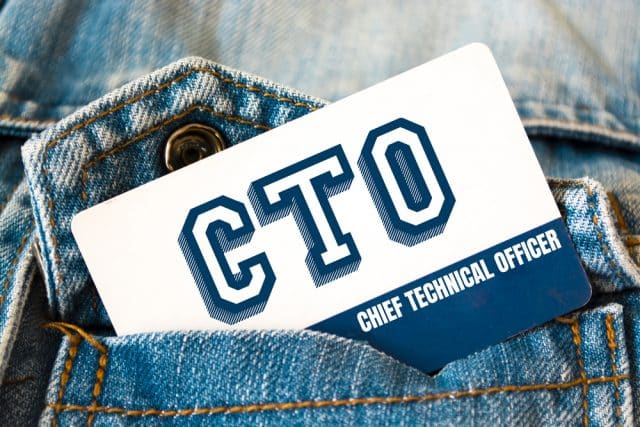The new path to CTO: When every job is a tech job

I was recently asked what degree is needed to become a CTO, and I realized my answer highlighted a major shift in our work environment. The days of the CTO being solely defined by their technical prowess are over. Today’s CTOs bring expertise from across disciplines. They are big-picture partners, innovators, strategists, and pragmatists who know how to unlock and realize the power of tech for their organizations.
Pearson’s Skills Map US report projects 1.9 million new jobs in technology implementation and maintenance across all industries by 2028 -- and the need for tech fluency extends even further. Technology has become a core competency in nearly every profession, erasing the boundaries between traditional “tech jobs” and the rest of the workforce. Simply put, all jobs are becoming tech jobs.
This shift has made the path to CTO more accessible than ever. Today, leaders from non-traditional backgrounds (I’m looking at you, philosophy majors) can rise to the top as tech executives.
The Expanding Definition of Tech Leadership
While still important to have engineering and architecture experience, today’s CTOs are emerging from increasingly diverse backgrounds, bringing with them a wealth of capabilities outside the realm of technology. A marketing expert leveraging AI or an operations manager implementing robotics could very well be tomorrow’s tech leader. This is because the true power of technology lies in how it’s applied, not in its complexity. This idea has shaped my leadership approach and reflects the shifting role of the CTO.
The most effective leaders understand that it is the context and applied value of technology, not technology itself that creates value. It’s not just about adopting the latest trends and coolest tech; it’s about ensuring those tools are deployed to meet real needs, drive growth, and advance strategic objectives. This requires a balance of technical expertise, the ability to connect innovation with human skills -- like communication, problem-solving, and teamwork -- and a deep knowledge of the business to turn potential into results.
Thriving alongside these dynamics requires more than expertise; it calls for a new playbook to guide the next generation of tech leaders.
Preparing for Tech Leadership: A New Playbook
So, how did I answer the person who asked about the degree needed to become a CTO? I didn’t point them to a specific degree. Instead, I emphasized a set of behaviors and skills that open the doors to this role.
Today’s successful CTOs excel in collaboration, talent development, and strategic partnership. These pillars form the foundation of future-ready leadership.
Here’s how aspiring CTOs at any point in their career can prepare to excel today.
- Prioritize Lifelong Learning with AI: The tech world never stands still, and neither should you. A commitment to continuous learning, especially in AI, is essential. Dive into a mix of learning resources: online courses, industry certifications, workshops, conferences, and peer networks. Try every new app, platform, model, feature, you can get your hands on. Experiment, fail, learn, and repeat. Personally, I’ve found immense value in being part of peer networks -- sharing insights and experiences with fellow tech enthusiasts has been incredibly enriching and has opened up new perspectives for me. Actively seek out opportunities to broaden your knowledge; lead by example and encourage your teams to also invest in expanding their knowledge.
- Embrace Broad Experiences: Seek out opportunities to work across different business functions -- from marketing and sales to operations and finance. This broader perspective is crucial for aligning technology with strategic goals and understanding the impact of technology on different parts of the organization. Cross-functional projects, rotational programs, and mentorship opportunities can provide invaluable insights into how different departments operate and how technology can be leveraged to improve their efficiency and effectiveness.
- Be Tech Curious: It’s never too late to learn to code and there are enormous benefits to advance your critical thinking and problem-solving skills. You don’t have to be the best developer or the most experienced architect, but you do need to have a breadth of experience to understand the capabilities, vectors, and potential of technology.
- Blend Technical Literacy with Business Acumen: Develop and ground your understanding of what key technologies can do and why they are important in the context of business. It is the depth of business context that makes all the difference to know how a new technology change trigger can drive real value in a scaled manner. Combining technical literacy with strong business acumen, includes building skills in financial analysis, strategic planning, negotiation, and risk management. The ability to translate technical concepts into business value and vice versa is a critical skill for the modern CTO.
- Foster Cross-Functional Collaboration: Effective communication isn't just a nice-to-have; it's the bedrock of successful cross-functional collaboration, especially in technology implementation. Given that communication skills are present in the vast majority of job postings analyzed by Pearson, it's clear that employers highly value this ability. Therefore, regardless of your current role, actively seek opportunities to hone these skills by working with colleagues in different departments. Volunteer for cross-functional projects, participate in company-wide initiatives, and build relationships outside your team. Every interaction is a chance to practice active listening, clear communication, and empathy. These experiences will not only broaden your understanding of the organization but also demonstrate your ability to lead and influence across diverse teams -- a crucial skill for any aspiring CTO.
- Develop Talent Cultivation Skills: A great CTO understands that technology is only as good as the people who build and implement it. Even without a formal leadership position, you can cultivate your talent development skills. Seek out mentors who can provide guidance and support as you navigate your career path. Become a mentor yourself, sharing your knowledge and experience with others. Actively build your professional network by attending industry events, joining online communities, and connecting with individuals in your field. These connections can provide valuable insights, open doors to new opportunities, and help you develop the skills necessary to lead and inspire teams in the future.
A Path Open to All: Embracing the Future of Tech Leadership
The path to becoming a CTO is no longer linear. As technology reshapes industries, the role will continue to evolve, favoring those who combine adaptability with insight, and leadership with technical fluency. The beauty of this transformation is its inclusivity. Whether you’re a software engineer, a supply chain analyst, or an entrepreneur, the path to the CTO chair is open. What matters most isn’t where you start, it's how you grow and adapt to the ever-changing landscape of technology. The future of tech leadership belongs to those who embrace lifelong learning, cultivate diverse business perspectives, and build bridges between technology and business.
Image credit: Uuganbayar.B/depositphotos.com

David Treat joined Pearson in 2024 as Chief Technology Officer, spearheading the establishment of the company’s AI Center of Enablement, while also overseeing the Research & Development and Ventures teams. In addition to his architectural and innovation responsibilities, David assumes leadership of the company’s digital and technology operations. He brings to the role nearly 30 years of experience, with deep expertise in technology innovation, generative AI, spatial computing, Web 3, and quantum computing. Prior to joining Pearson, David held several senior technology roles at Deloitte, UBS Investment Bank, and Accenture.
